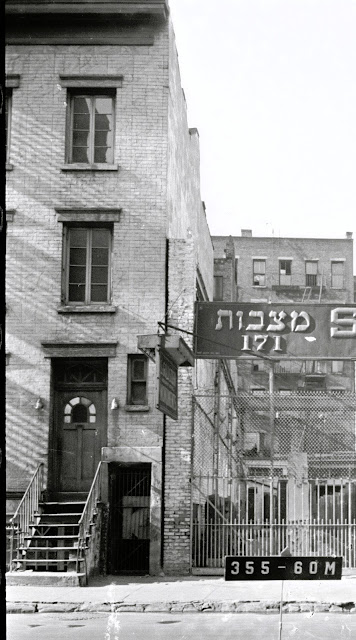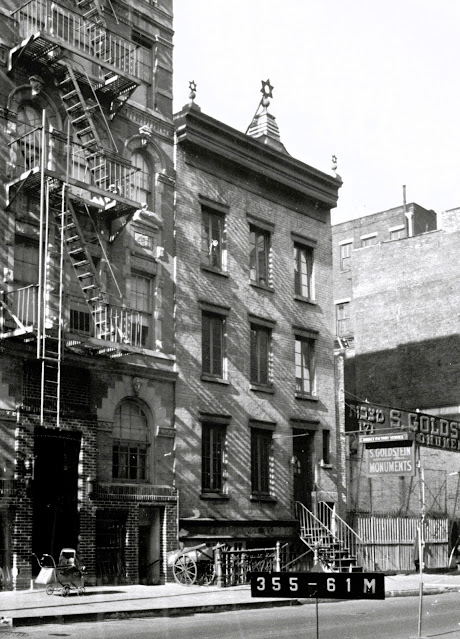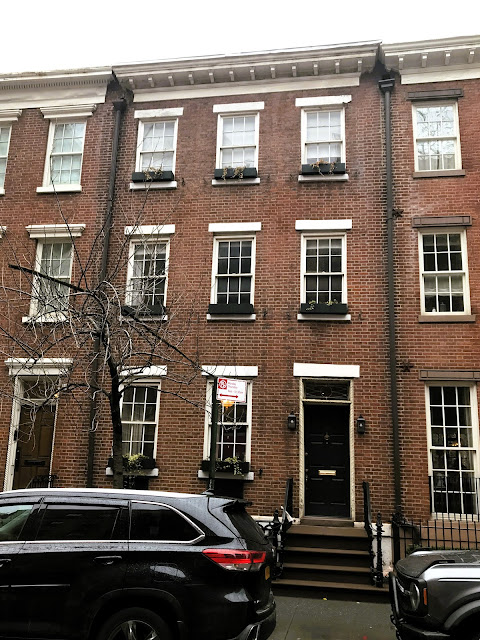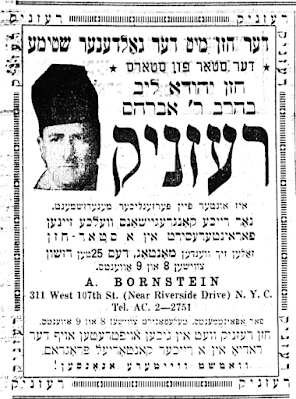Adolphus Smedberg and his wife, the former Mary Ludlow Morton, were both born in 1835. They had a son, Harry Ashton, and were living in the newly built, brownstone-fronted house at 111 East 61st Street in 1872 when their second son, Adolphus, Jr., was born. Apparently sharing the residence with the Smedbergs were Adolphus's sister and her husband. William Adams, Smedberg's brother-in-law, died here on January 21, 1876 at the age of 61.
The Smedbergs appear to have moved in 1878, when Harry was attending Columbia. The following year, the Ellison family occupied the house, and by the mid-1880s, it was home to the Wattles family. On December 23, 1886, the New-York Tribune announced, "Mrs. Wattles held a large reception and tea yesterday from 4 until 6 o'clock, at No. 111 East Sixty-first-st., to introduce her daughter, Miss Wattles. Over two hundred guests called."
Harris D. and Elizabeth B. Colt, real estate operators, purchased the "four-story stone front dwelling," as reported by the Real Estate Record & Guide, in 1901. They leased it to a succession of well-to-do families.
In an article titled "Some Recent Flittings" on November 11, 1906, for instance, The New York Times noted, "Mr. and Mrs. John Wesley Peale [moved] to their new house, 111 East Sixty-first Street."
Following the Peales here were Charles A. Shearson, his wife, the former Jessie McCullough, and their adopted son, Charles, Jr. Born in Galt, Ontario, Canada in 1856, Shearson came to New York in 1903. He was a member of the New York Cotton Exchange and a partner in the cotton brokerage firm of Shearson, Hammill & Co. His brother, Edward, also lived in the East 61st Street house.
In the early 20th century, births, deaths, and minor operations took place within the homes of the affluent. On the evening of January 22, 1910, the 54-year-old Edward A. Shearson, Sr. underwent an appendicitis operation in his bedroom. He did not survive.
In August the following year, Arthur A. Fowler and his wife, the former Elizabeth Bonright, signed a lease. They appear to have remained here until May 29, 1919, when the house was sold to Dr. Alfred Wild Gardener and his wife, Mary E., for $60,000 (about $1 million in 2025 terms).
Shortly after Mary's death in February 1923, Dr. Wild sold 111 East 61st Street to Dr. John Edmund MacKenty and his wife, the former Katherine Gilman. Before moving in, they hired architect Edward S. Hewitt to drastically remodel the outdated brownstone.
Hewitt stripped off the facade, removed the stoop, and pulled the front forward to the property line. The new projected portion rose four stories. The fifth floor sat back to provide a screened sleeping porch. Hewitt's spartan neo-Georgian design included a handsome marble entrance with engaged columns and an elegant swan's neck pediment and urn. The Flemish bond brick of the upper floors were trimmed with marble sills and reeded lintels, their ends decorated with carved rosettes.
image via the NYC Dept of Records & Information Services.
Born in 1869, MacKenty married Katherine in 1898 in Washington D.C. She was the daughter of Colonel Jeremiah H. Gilman and Katharine Rogers. The couple had two children, John Gilman, and Katharine (known familiarly as Kit). Kit was married to Reverend Wilhelminus B. Bryan, Jr. and lived in Springfield, Massachusetts.
Dr. John Edmund MacKenty had joined the medical faculty of McGill University in 1892. He was now the senior surgeon at the Manhattan Eye, Ear and Throat Hospital. His medical office on the ground floor was part of the renovations to 111 East 61st Street. In 1925, the year they moved in, he invented a device that enabled "a person whose larynx had been removed to speak," as described by the New York Evening Post.
It may have been Katherine's growing up in a military family that prompted her interest in the Army Relief Society. In 1925, she was elected assistant treasurer of the organization. She was also highly involved in the Women's City Club. That same year, she was elected its director.
John Gilman MacKenty had graduated from the Sheffield Scientific School of Yale University in 1923. When the family moved into 111 East 61st Street, he was working with the Radio Corporation of America (later RCA). On February 27, 1926, his engagement to Katharine Walker was announced. His marriage would not only add another Katharine to the family, but another connection to the military. Katharine's grandfather was Colonel Aldace F. Walker.
Dr. MacKenty routinely submitted technical articles to medical journals, and in 1927 published two books, Cancer of the Larynx and Nursing in Diseases of the Eye, Ear, Nose and Throat.
On the night of December 11, 1931, MacKenty died in the East 61st Street house. He was 62 years old.
Katherine leased the ground floor office to Dr. Otto V. M. Schmidt. She remained here until suffering a fatal heart attack on November 29, 1938 at the age of 62. Her funeral was held in the house on December 1.
On April 27, 1939, The New York Sun reported that Katherine MacKenty's estate had sold 111 East 61st Street to Regency Hall, Inc. The article described the residence as "containing fifteen rooms and four baths," adding, "The house will be used for combination residence and doctor's office."
The office was used by several physicians. Dr. William Lawrence Gatewood was here in 1946, and Drs. George A. Friedman and Nathan Millman were listed here in 1948 and 1949 respectively.
The end of the upper floors as a single-family home came in 1953 when they were converted to apartments. Doctors in the ground floor office came and went throughout the subsequent years, perhaps the longest to remain being Dr. Percy Ryberg, here in the 1960s and '70s.
There are still apartments above the doctor's office today. Although callous replacement windows disfigure Hewitt's neo-Georgian design, the house otherwise looks much as it did when the MacKentys remodeled the vintage 1870s rowhouse.
photograph by the author























.png)
